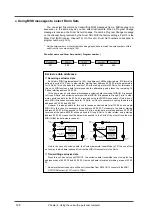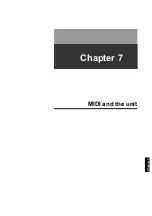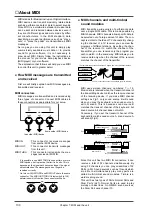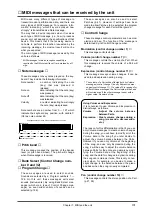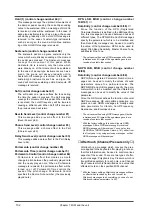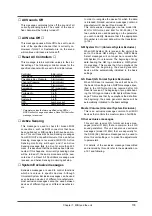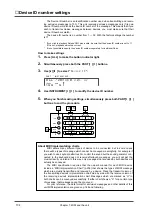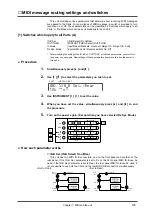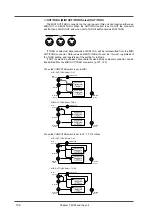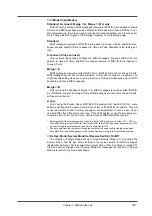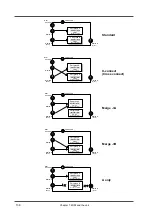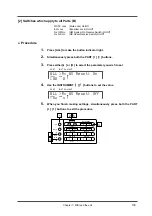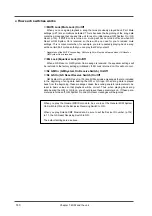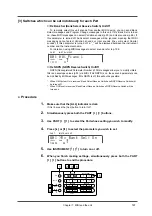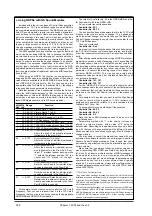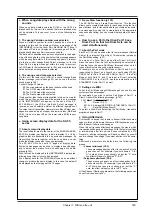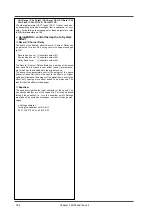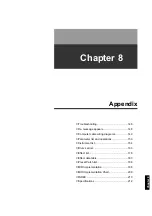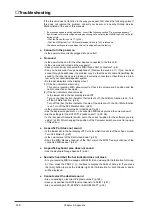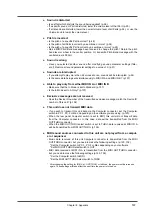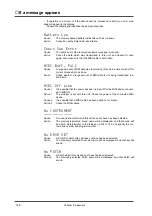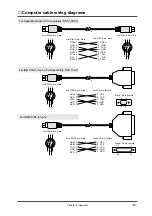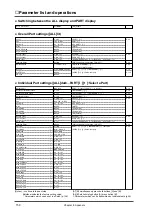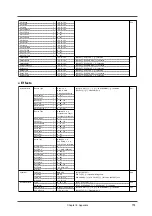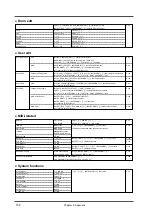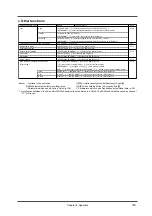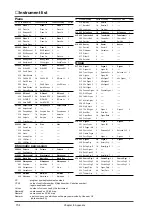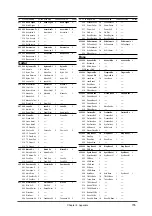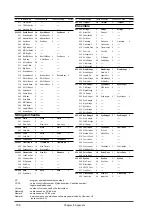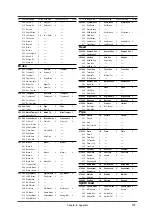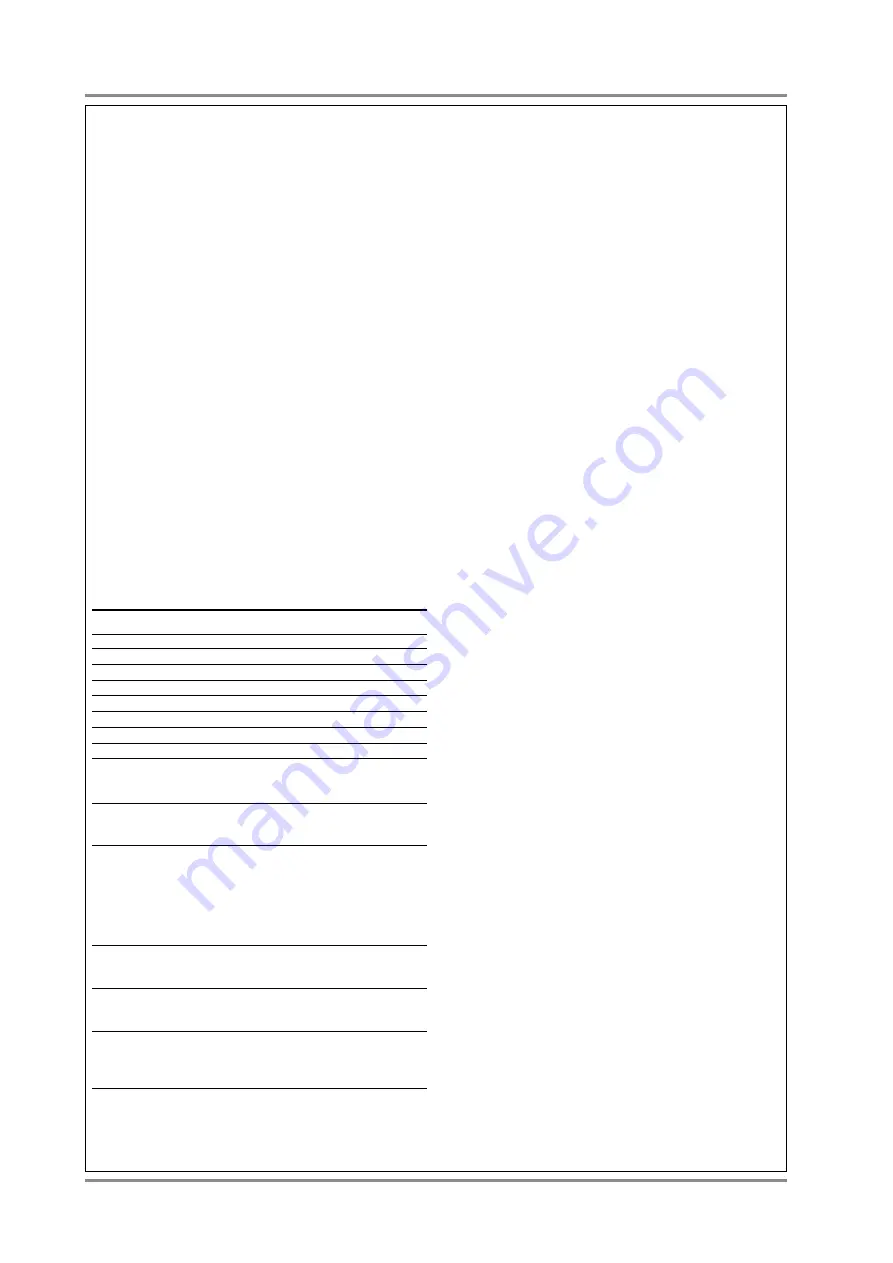
Chapter 7. MIDI and the unit
142
●
Using NRPNs with GS Sound Modules
Included within the various types of Control Changes (often
abbreviated as “CC”) is an extended range known as NRPNs
(non-registered parameter numbers). The NRPNs can be used
with GS sound modules to alter various sound parameters,
such as those for the vibrato, filters, and envelopes. There are
distinct advantages to using Control Changes rather than
Exclusive messages when wishing to modify sounds. They are
not as complicated, they are easier to handle, and they do not
require a large amount of data (p.132, 189). Such Control
Change messages include a number (the Control Number)
which specifies the type of function that is to be controlled.
The MIDI specifications do not define any specific functions
which can be set using NRPNs. This is because the NRPNs
are intended to serve as a flexible range of controls which can
be assigned whatever parameters are required for a specific
device in order to achieve the desired changes in its sounds,
or enhance its expressive capabilities. In contrast, there is
another type of extended form of control known as an RPN
(registered parameter number). As their name suggests, RPN
functions are all defined (registered) within the MIDI specifica-
tions (p.189).
When using an NRPN, the function (sound parameter)
being dealt with needs to be specified by means of the numeric
values that are supplied for the NRPN MSB (Controller No. 99)
and NRPN LSB (Controller No. 98). By then sending the
appropriate value for Data Entry (Controller No. 6), the change
in the specified sound parameter is accomplished.
Note that instead of the hexadecimal notation that is used
within the “MIDI Implementation” (p.189), the numbers for the
combinations of values for NRPNs that appear in the chart
below have all been converted to decimal. (Note also that
these NRPNs are specific only to GS sound modules.)
NRPN NRPN
Range
Function
MSB LSB
1
8 0-64-127 Vibrato Rate *1 (p.32)
1
9 0-64-127 Vibrato Depth *1 (p.32)
1
10 0-64-127 Vibrato Delay *1 (p.32)
1
32 0-64-127 TVF Cutoff Frequency *1 (p.33)
1
33 0-64-127 TVF Resonance *1 (p.33)
1
99 0-64-127 TVF&TVA Envelope Attack Time *1 (p.33)
1
100 0-64-127 TVF&TVA Envelope Decay Time *1 (p.33)
1
102 0-64-127 TVF&TVA Envelope Release Time *1 (p.33)
24
rr 0-64-127 Drum Instrument Pitch Coarse *1
Alters the pitch of individual percussion
instruments in the drum Part.
26
rr 0-127
Drum Instrument TVA Level
Alters the volume of individual percussion
instruments in the drum Part.
28
rr 0,1-64-127 Drum Instrument Pan
Alters the panning for individual percus-
sion instruments in the Drum Part. A set-
ting of “0” provides random panning, while
“1” selects the leftmost position, “64” the
center, and “127” places it at the right-
most position.
29
rr 0-127
Drum Instrument Reverb Send Level
Sets the reverb depth for individual per-
cussion instruments in the Drum Part.
30
rr 0-127
Drum Instrument Chorus Send Level
Sets the chorus depth for individual per-
cussion instruments in the Drum Part.
31
rr 0-127
Drum Instrument Delay Send Level
Determines the amount of delay for indi-
vidual percussion instruments in the Drum
Part (SC-88/this unit only)
For example, let’s say that you want to alter the TVF Cutoff
Frequency. First, you need to assert that it is the TVF Cutoff
Frequency that you wish to control by sending the appropriate
NRPN MSB and NRPN LSB combination.
The value for Controller No. 99 is the NRPN MSB, and that
for Controller No. 98 is the NRPN LSB.
So, you would transmit these values:
Controller No. 99: 1
Controller No. 98: 32
The unit has thus been made aware that it is the TVF Cutoff
Frequency that you are going to change. To go ahead and
make the actual change, you would then use the Data Entry
Control Change message to supply the new value (xx) for the
TVF Cutoff Frequency.
Thus, you would send:
Controller No. 6: xx
As a result of transmitting the above three controller values,
the TVF Cutoff Frequency will have been altered, and the tim-
bre of the instrument selected for that Part should sound differ-
ently.
After altering sound parameters using an NRPN, we recom-
mend that you make a habit of asserting a “null” by sending the
RPN values shown below. This will tell the unit that you are fin-
ished working with the parameter that has been specified, and
that it should stop waiting for any further new values for that
parameter. (It cancels the standing request for change in a
particular NRPN or RPN.) This way you can avoid having
unexpected changes made if any unintended Data Entry val-
ues get sent afterwards.
Controller No. 101: 127
Controller No. 100: 127
For the “NRPN LSB rr” value, you need to supply the value
which corresponds to the note number of the particular percus-
sion instrument that you want to address (these numbers can
be found in the Drum Set Chart at the rear of the manual
→
p.164).
For example, let’s say that you want to set the High Bongo
so that no reverb will be applied to it. This instrument is
assigned note number 60 (middle C), and is contained in the
Standard Set 1 Drum Set.
To accomplish this you would transmit these values:
Controller No. 99: 29
Controller No. 98: 60
Controller No. 6: 0
Note that these MIDI messages need to be sent in the
order listed above.
Parameters marked with *1 in the chart at left can be
altered in a relative manner, with a value of “0” being the
default value. Depending on the particular sound you are work-
ing with, the type of change available will be different (in some
cases you may not even notice any change). Also, the range of
change will vary.
You may need to consult the manual that came with your
equipment or software for details on how to properly input and
transmit Control Change messages. Note, though, that some
devices may only allow you to work with a limited range of con-
troller numbers.
Make sure that you always follow the order shown above
when transmitting RPN, NRPN, and Data Entry data. Be care-
ful, since if you insert a multiple number of MIDI messages at
the same point in time (or in very close range of each other)
when using some types of music software, the messages can
sometimes be sent out in an order different than originally
intended. To avoid problems, always allow sufficient space
between adjacent messages (at least 1 tick at 96 TPQN, and 5
ticks at 480 TPQN).
* TPQN: Ticks Per Quarter Note
* Any value which has been imposed by means of an NRPN will not be
initialized even when a different sound is changed to in compliance with
a received Program Change. Settings which have been made using
NRPNs can only be initialized by sending a GS Reset, or by performing
a GS Initialization (p.118).
* At the factory default settings, this unit will not respond to NRPN mes-
sages. However, after a GS Reset has been received it will recognize
NRPNs. Alternately, you can enable recognition of NRPNs by turning on
“Rx.NRPN” (NRPN reception switch p.141), either by using the panel
buttons, or through Exclusive messages.
Содержание SoundCanvas SC-88 Pro
Страница 9: ...Chapter 1 Try out the unit Quick start Chapter 1...
Страница 18: ...Chapter 1 Try out the unit 16...
Страница 19: ...Chapter 2 Parts and parameters Chapter 2...
Страница 47: ...Chapter 3 System Effects Chapter 3...
Страница 57: ...Chapter 4 Insertion Effects Chapter 4...
Страница 97: ...Chapter 5 Convenient functions Chapter 5...
Страница 121: ...Chapter 6 Using the unit with a personal computer Chapter 6...
Страница 131: ...Chapter 7 Chapter 7 MIDI and the unit...

